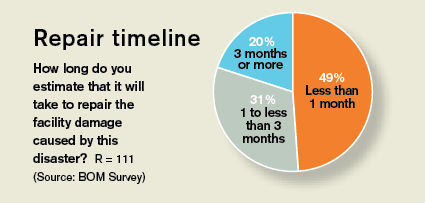Flooding From Sandy Raises Questions About Location of Electrical Gear
Electrical panels and meters are — or, perhaps, were — a common sight in the basements of Manhattan buildings. Code requires that they be put in unoccupied space, so the basement is often the logical location for electrical gear.
Hurricane Sandy may have forced a revision of that thinking, says Lindsay Audin, president, Energywiz. Buildings throughout Manhattan had to tear out panels and meters and replace them after the storm flooded much of the city.

"When you have electric panels that get wet, especially with seawater, which has salt in it, you don't dare turn your power back on," he says. "You don't dare take the chance of turning something on, causing an electric fire, then not being insured because you did a stupid thing just to come back online."
As a result, many of Manhattan's commercial buildings were offline for a long time. One of Audin's clients was without power for all of November, December and January because water had reached a level that not only soaked the meter, but the panels as well, which meant a major replacement project — and some huge generator bills.
"It was sufficiently bad that (the utility) would not hook up again — because obviously, if they did, they would be party to a major mistake — and the inspectors would not allow the place to come back on until all of the panels and switchgear had been replaced," he says. In the meantime, a generator kept the building going, at the cost of three months' worth of rental and fuel.
So, Audin says, when it comes time to work on your electrical system, look into whether the critical pieces can be moved as well. It will probably be expensive and a temporary inconvenience, but that could prove better than the alternative.
"If you're going to be doing any upgrades, do them a floor up, not in the basement," he says. "I think you're going to see a lot of rooftop facilities for things like boilers and chillers. Next time they're doing an upgrade of some sort, they're going to think about this and say, 'Gee, have I got a rooftop, have I got a setback, have I got someplace else I can stick this?'"
— Casey Laughman, managing editor
Related Topics:




















